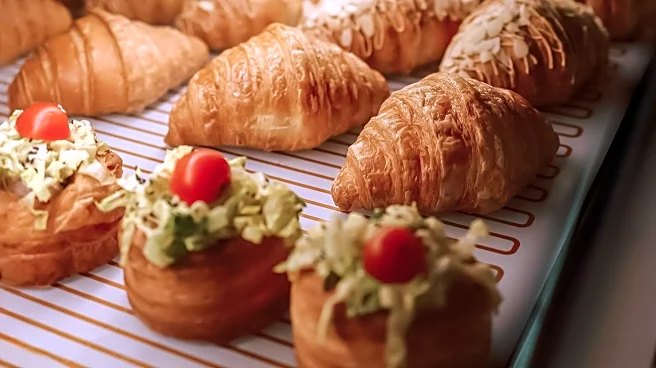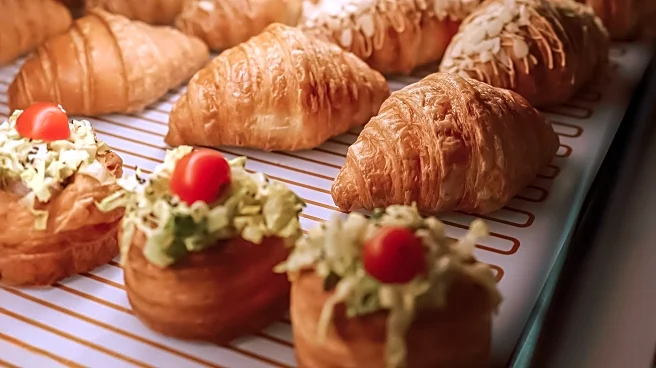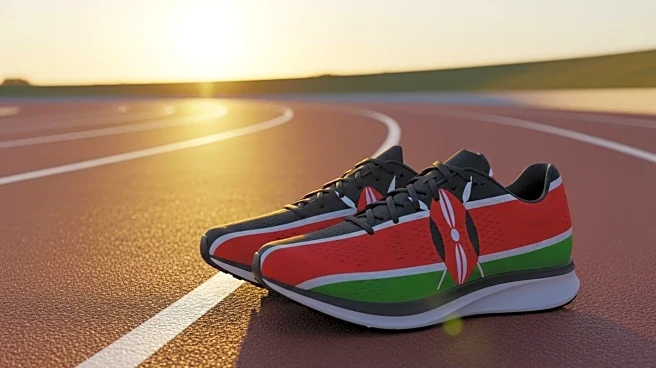What's Happening?
On Sunday, approximately 100 runners participated in the inaugural 'Bakery Run' half marathon in New York City, organized by the media company TIPSTER. The event featured a unique twist, as participants stopped at nearly a dozen local bakeries throughout the 13.1-mile course. The race began in Bushwick, Brooklyn, and traversed the Williamsburg Bridge into Manhattan, before crossing the Manhattan Bridge back into Brooklyn Heights. Runners indulged in various pastries, including cream-filled croissants and crullers, at eight different bakeries along the route. The event was divided into three waves to accommodate different experience levels: advanced, intermediate, and beginner runners.
Why It's Important?
The 'Bakery Run' represents a novel approach to combining fitness with culinary indulgence, highlighting a growing trend of experiential events that blend lifestyle activities. This event not only promotes local bakeries and their craft but also encourages community engagement and tourism in New York City. By pairing running with pastry tasting, the event appeals to both fitness enthusiasts and food lovers, potentially boosting local businesses and fostering a sense of community. The success of such events could inspire similar initiatives in other cities, contributing to the diversification of urban recreational activities.
What's Next?
Following the success of the NYC 'Bakery Run', TIPSTER plans to expand the concept to other cities worldwide, including London, Mexico City, and Amsterdam. This expansion could further popularize the combination of running and culinary experiences, potentially leading to increased interest in local food cultures and tourism. As the event gains traction, it may attract more participants and sponsors, enhancing its impact on local economies and community engagement.
Beyond the Headlines
The 'Bakery Run' reflects broader cultural shifts towards integrating leisure activities with lifestyle experiences. It underscores the importance of supporting local businesses and artisans, while also promoting health and wellness. Such events can serve as a platform for cultural exchange and innovation, encouraging cities to explore creative ways to engage residents and visitors alike.











